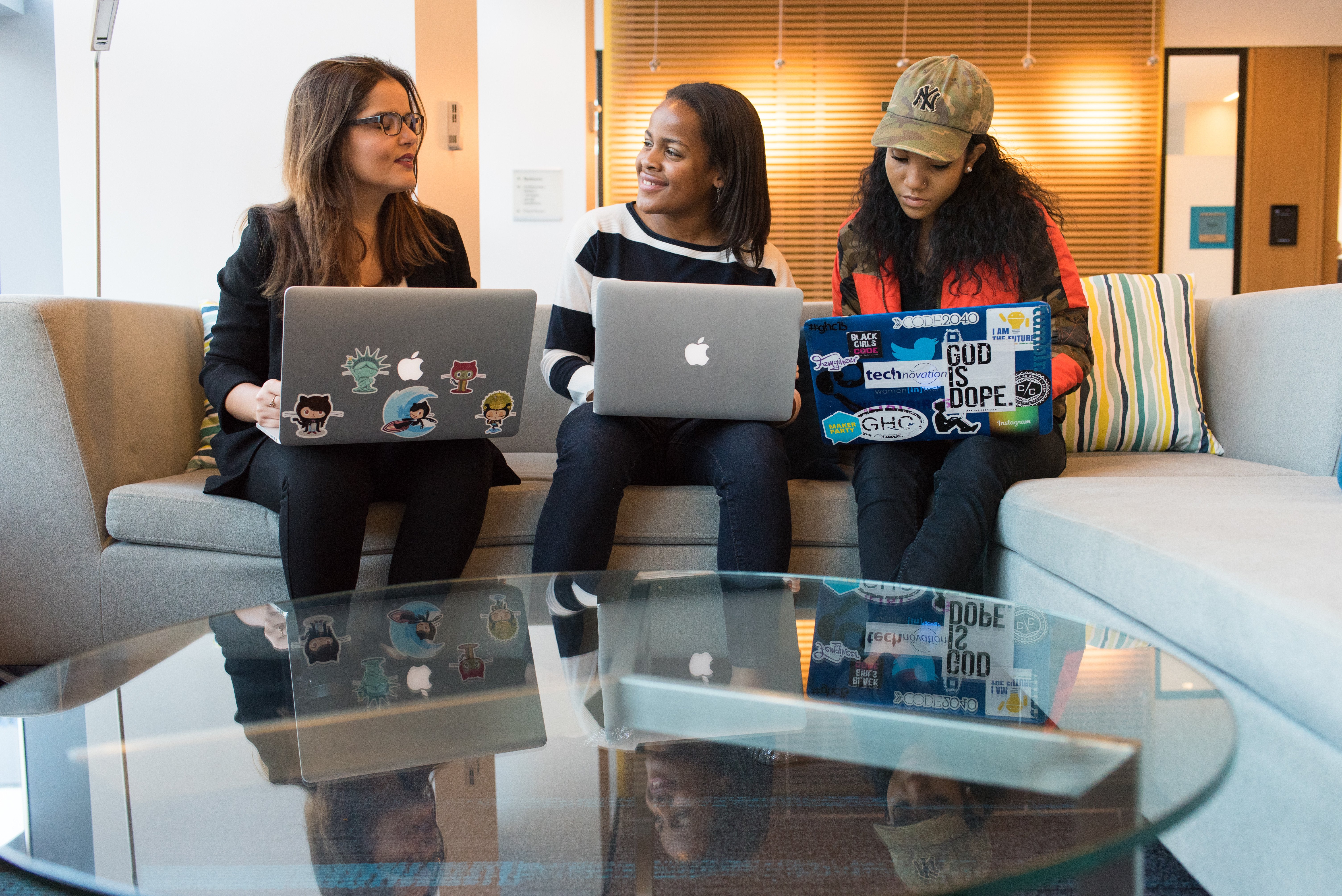Achieving our vision through recruiting and talent acquisition doesn't just hinge on who we hire. It's driven by the relationships we build during the hiring process from the experience we create for candidates. The nature and depth of these relationships set the tone for the engagement, resilience, and commitment that each new employee brings to their role, especially in the first 90 days.
In short, the candidate experience serves as a barometer for what they expect from our organizational culture and determines their connection with our core values and strategic vision. While we can act to ensure each candidate touchpoint is smooth and seamless, we're missing out if we don't strive to build thriving relationships from the candidate experience.
Relationships Drive Well-Being and the Candidate Experience
Think back to the last time you were a candidate. Memories of specific interactions have probably faded, but what endures are your feelings about the experience, the relationships you gained, and how those make you feel (cue Maya Angelou vibes). For unhired candidates, these feelings, ultimately your employer brand, are what remain to influence their future decisions and thoughts about your organization. Making candidate experience best practices happen isn't important only for those you hire.
On top of that, these relationships are a powerful tool for fostering employee well-being and the significant person, organization, and financial gains that come with it.
Well-being is not a monolithic concept; it spans multiple dimensions, from the physical to the mental and emotional. It's not merely the absence of stress and disease but overall human flourishing.
Much about our work and careers impacts our well-being. It is about fostering a sense of purpose, creating an environment where employees feel valued, and connected to a strong culture that supports each of their uniqueness and individual goals.
The ROI of Well-Being
A robust state of employee well-being directly impacts productivity. When our needs are met and we feel supported, we're engaged, focused, and committed. Greater well-being increases cognitive function, creativity, and problem-solving abilities, creating a flywheel effect that grows culture, business results, and personal growth. Conversely, lacking employee well-being contributes to burnout, decreased motivation, and lackluster performance.
 It's not surprising there's strong empirical evidence supporting the connection between well-being and productivity.
It's not surprising there's strong empirical evidence supporting the connection between well-being and productivity.
- A report by the World Health Organization, for instance, revealed that depression and anxiety - aspects of ill-being - cost the global economy an estimated $1 trillion per year in lost productivity.
- On the flip side, peer-reviewed research suggests that employees with strong well-being are more resilient, handle change more effectively, and are 45% more likely to report high job satisfaction, all contributing to increased productivity.
Beyond productivity, employee well-being is a cornerstone of employee retention. Compensation, benefits, and even flexibility only go so far. We seek organizations and teams that nourish our well-being and growth. When we invest in creating a supportive, fulfilling work environment, employees feel appreciated and valued. This strengthens our loyalty and commitment to the organization, reducing turnover rates.
Well-Being and Retention
In fact, a study tracking workers across industries revealed that employees who believe their employers care about their well-being are almost 50 percent less likely to leave within the next year. This suggests that the benefits of just recognizing employee well-being extend beyond productivity to include significant reductions in the substantial costs associated with employee turnover.
In sum, the link between employee well-being, productivity, and retention probably isn't thought about enough. Acting intentionally to maximize the interconnectedness of these factors is not only ethical but provides a strategic advantage. As we manage what seems like increasing turbulence and unpredictable change, placing employee well-being at the heart of our operations is not just a matter of ethics—it's a powerful strategy that propels productivity, boosts retention, and drives sustainable business growth.
How Candidate Experience Affects Employee Well-being
The candidate experience encompasses the thoughts and feelings that job seekers have regarding an organization's job application process. It's every interaction between the candidate and the company, ranging from the initial job advertisement and online application process to the screening and interviewing stages, as well as communication, feedback, and onboarding.
When we think of the factors that contribute to employee well-being, we often consider what happens once we're on the job, including aspects of work like job security, salary, work-life balance, or corporate culture. However, our first impressions – our candidate experience – are a key driver.
Why? Because it's where our relationship with our employer begins. Best practices for the candidate experience continue to influence us long after we're part of the team – and in doing so our overall well-being. With that in mind, here's how to drive employee well-being and results with best practices for the candidate experience.
Set the Foundation for Job Satisfaction
What does it mean to be satisfied at work? An easy way to think about it is that our needs, from compensation through fulfillment, are met. This makes the candidate experience of paramount importance as we communicate expectations and show if we're capable of understanding and meeting the candidate's needs. In addition, the employee lifecycle (or journey as we like to call it) begins with recruitment. There's not a reset switch (or a Men in Black style pen) that gives us a fresh start when a candidate joins our team.
What makes a candidate experience positive? One that builds a trusting relationship by making the candidate feel they were:
- Treated with respect and understanding
- Provided the opportunity to perform
- Engaged with relevant and resonant information and with the right information at the right time
When candidates are treated with respect, authenticity, and transparency during the recruitment process, they aren't just told, but shown, what they can expect from your team. A candidate experience that leaves doubts as to respect and fairness, or leaves the candidate with gaps in knowledge will provide an uncertain foundation for satisfaction and trust.
Reinforce the Employer Brand and Your Culture
Candidates form an opinion about you - as an employer and as a business – from the beginning of the application process. Consider these facts on the influence of candidate perceptions and word of mouth:
- The majority of job seekers report a negative candidate experience (the good news: a small change can make a big difference and exceed your competition!)
- Over 70 percent of candidates with negative perceptions share them with others online - on Glassdoor or elsewhere
- The majority of job seekers report avoiding companies after reading negative reviews online
Many industries, even if they are large like food service and healthcare, are comprised of closely interconnected networks. A candidate you deny today could be a customer tomorrow, or a qualified candidate in just a short time.
Keep in mind that candidates with negative experiences can become your employees. Their perceptions of your employer brand become their initial beliefs about your values and culture, and their well-being long-term.
Leaving every candidate with a positive experience means even those that decline your offer of employment are likely to leave feeling great about you and what you represent. This can attract high-potential applicants, allowing you to find employees with not only technical readiness but also ones that strengthen and live your culture — both critical factors in fostering employee well-being.
Promotes Trust and Transparency
A candidate experience characterized by clear communication and timely feedback establishes trust and sets clear expectations. Beginning a role with realistic expectations significantly buffers job stress, contributing to improved job satisfaction and overall well-being. Feeling a sense of belonging, that we're accepted and recognized for our own uniqueness, increases psychological safety, confidence and performance in training and on the job.
Strategies to Enhance Candidate Experience
In sum, how we feel as candidates influences the excitement, commitment, sense of trust and psychological safety we bring to day one on the job. With that said, how can we create a remarkable experience for candidates that sets both our future new hires and those who continue on their journey on stellar paths forward?
Clear Communication
Transparent and timely communication is essential to a positive candidate experience. In our work with industries from healthcare to manufacturing, here are some best practices:
- What information do your candidates want, and need, to know? Consider crowdsourcing all stakeholders in your hiring process, from recruiters to hiring managers. What information do candidates want? Frequently overlook? Use this data to implement fail-safe methods for always sharing this information with candidates. Candidate experience surveys are also useful for isolating gaps in communication.
- Candidates should be updated regularly about the progress of their application and next steps. This fosters trust and should be realistic to execute with set communication templates recruiters and hiring managers can trigger within your applicant tracking system (ATS).
Streamlined Processes
A simplified and user-friendly application process can drastically improve candidate experience. The process should be efficient, respectful of the candidate's time, and designed to minimize frustrations. Incorporating technology like Applicant Tracking Systems (ATS) can enhance the experience by making it easy to apply, schedule interviews, and receive updates.
- We provide our clients with information on completion rates by step in the hiring process. This information can also be easily gathered through your ATS our figured out manually.
- Similarly, review time-to-complete information by step. Comparing that side-by-side with completion and drop-off rates can lead to simple-to-implement fixes for boosting candidate engagement and completion.
- Diversity metrics by step in your hiring process should also be reviewed to ensure each step maintains an inclusive experience.
Personalized Interaction
Relationships grow from us feeling understood and nurturing a connection. Some of this can be easily automated. For example, automated emails can address candidates by their names. Recruiters can use active listening techniques to gain a deeper understanding and build trust. These actions foster belonging and value for the candidate, earning trust that can extend into their tenure if hired.
Meaningful Candidate Feedback
Consider implementing constructive two-way feedback, especially for candidates who have reached the interview stage. If a hiring assessment is used, consider sharing with the candidates their strengths and explore in conversation how they could maximize them on the job.
- Corvirtus assessment results, for hiring and promotion, for example, provide evidence-based recommendations to support the candidate if hired.
- Reports also provide interview questions for the candidate's two lowest scoring areas that could guide discussion and connect the hiring process to the new hire experience.
- Both of these tools can ignite conversations where candidates can ask clarification questions to ensure your opportunity will support their values, goals, and overall well-being.
- Lastly, gather information from candidates across your hiring funnel: from application through new hire with ongoing candidate experience surveys.
Stellar Candidate Experiences That Nurture Well-Being and Growth
The candidate experience is a competitive differentiator and key to any organization's ability to thrive and compete – regardless of industry. It's about building relationships with our most important resource: our people.
Fundamentally, any best practice for the candidate experience comes down to showing you understand and care about the candidate's well-being. Further, creating an experience that makes the candidate feel valued, proud, and excited about the opportunity before them creates positive momentum to kick off their employee journey.
Exceptional Photo Credits:"Diverse people working at an office" by Rawpixel Ltd is licensed under CC BY 2.0. Team Meeting by #WOCinTechChat
Get Started Now -
Access a sample situational assessment to build a positive candidate experience that drives employee well-being and business results






